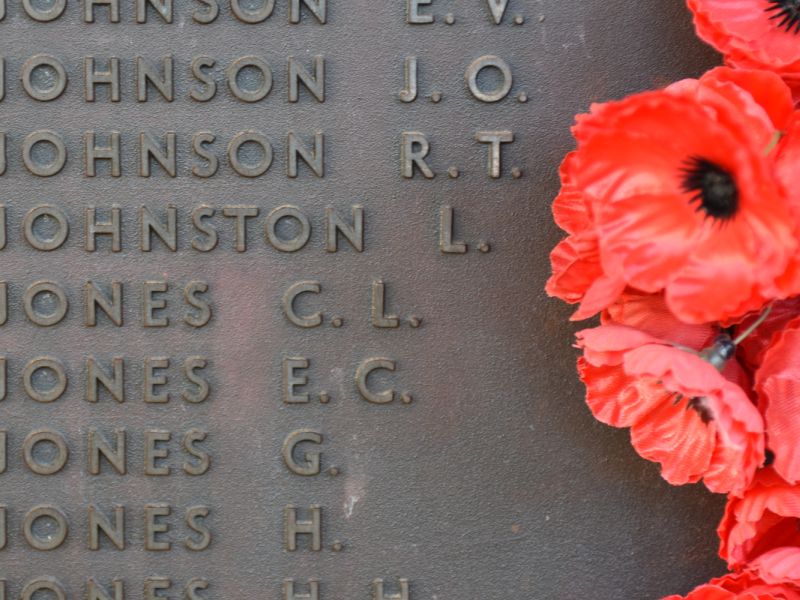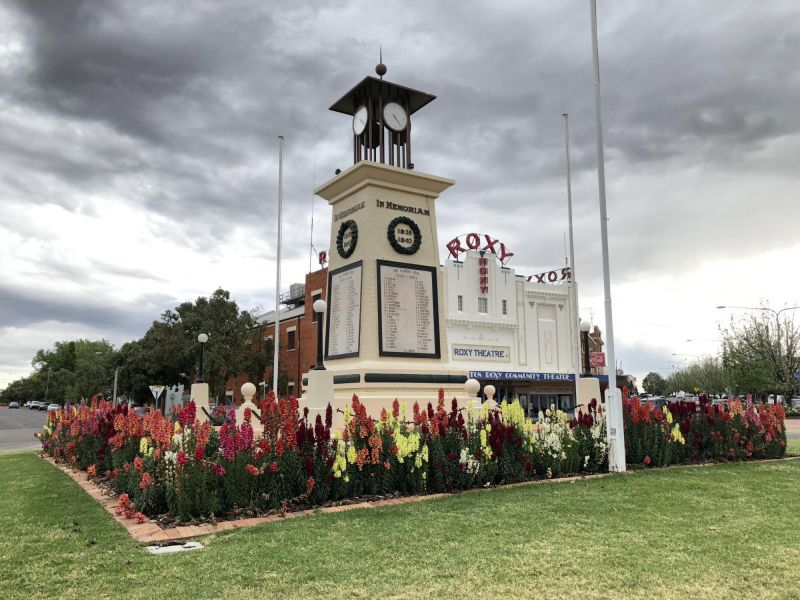From the Argentine to Mouquet Farm
On one panel of the Leeton War Memorial, beneath “Our Glorious Dead 1914-1918, is the name C. Lloyd-Jones. The hyphenated surname reflects Welsh heritage, but C. Lloyd-Jones was not born in Australia, nor was he born in Wales. In fact, Caradog Lloyd-Jones was born in Argentina.
In Wales, after the industrial revolution, there were many who saw such changes as an erosion of a traditional way of life. With a view to preserving their culture some cast their gaze westward, with the idea of setting up Welsh colonies in North America. Welsh settlements were founded in the United States, but these quickly became anglicised so those in Wales seeking to continue the Welsh way of life looked further south, to Argentina. There the Argentine government indicated that it was prepared to allow new settlers to retain their culture and heritage. Caradog’s parents were among those who moved first to Santa Fe in the north of Argentina, where Caradog and his brother David were born, then later to the province of Chubut.
Although at first the Argentine government was willing to allow the Welsh settlers the cultural freedom they sought, and even granted them official title to the land, the turn of the century marked a change in attitude. It imposed direct rule on the colony and ended the speaking of Welsh at local government level and in the schools. The Welsh utopian dream appeared to be disintegrating. Caradog emigrated to Australia in 1912 and his brother David followed a year later.
When war was declared in August 1914 Caradog and David were farming in the Leeton district of NSW. In August 1915, Caradog travelled to Cootamundra where he enlisted in the Australian Imperial Force. On his attestation papers he states clearly that he was a “natural born” British citizen. With service number 3071 he was posted to the 10th Reinforcements of the 13th Australian Infantry Battalion and embarked for overseas service in September 1915. After a brief period hospitalised for mumps in Abbassia, Egypt, Caradog joined his battalion at Moascar, Egypt in February 1916.
In June 1916, the 13th Battalion sailed for France and the Western Front, there to experience the bloody trench warfare of that theatre. Its first major action was at Pozieres in August. Following the capture of Pozières and the German lines at the windmill east of the village in late July and early August 1916, the Australians attacked northwards towards the site known as Mouquet Farm. Between the 8th of August and 3rd of September 1916, the Australians launched nine separate attacks to capture the heavily defended German position. In one of these attacks, on the 29th of August, Caradog was reported as wounded in action but was subsequently determined to have been killed in action. His body was never recovered, and he has no known grave.
This “natural born” British citizen from Argentina was 25 years old when he died serving his King.
Sources:
AWM Website
AIF Project: https://www.aif.adfa.edu.au
https://www.historic-uk.com/HistoryUK/HistoryofWales/The-History-of-Pat…
Personal correspondence: Norberto Lloyd Jones

 Henry C Moulds
Henry C Moulds